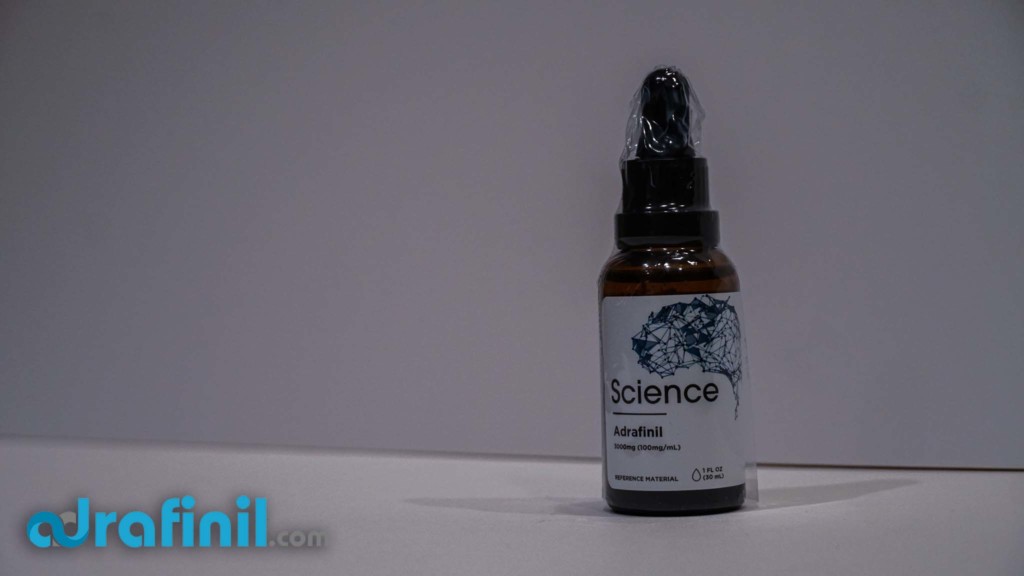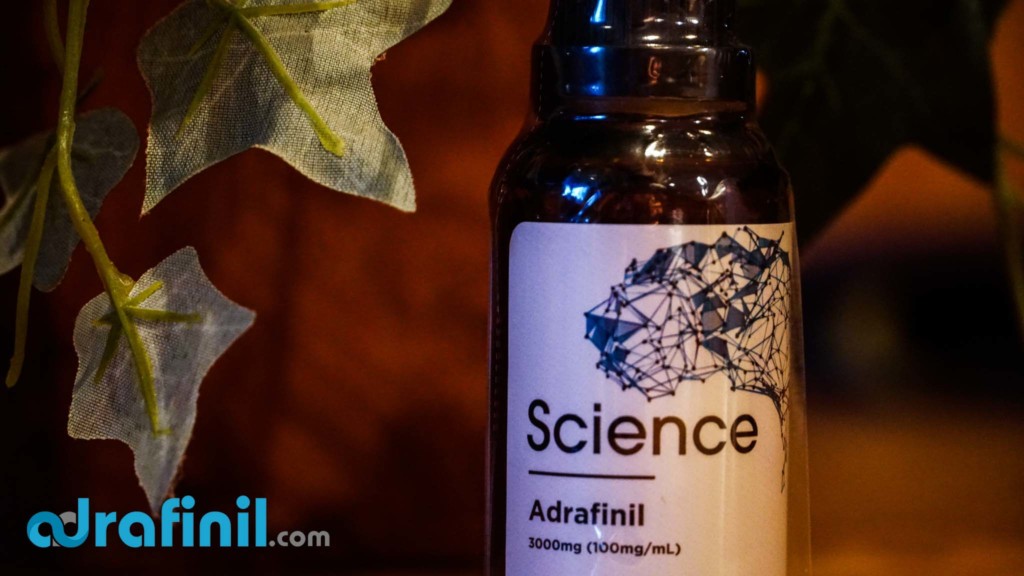Are you trying to find the best adrafinil stack for your next experiment?
You are not alone. Adrafinil has proven efficacy as a vigilance-promoting agent and has shown potential as a cognitive enhancer, yet its exact mechanism of action is not fully understood. This suggests that further investigations into adrafinil, possibly in combination with other nootropics, may be warranted.
In this A-Z guide, we’ll explore a number of other nootropics that may be administered simultaneously or concurrently with adrafinil, and outline the potential risks and benefits of each stack.
Let’s get started.
Order Adrafinil online from the best vendor in the world!
Great prices, quick shipping, and guaranteed delivery.
Disclaimer: The contents of Adrafinil.com are for informational and educational purposes only. We do not provide legal advice. Likewise, we do not provide medical advice, diagnosis, or treatment. Please consult your physician prior to consuming Adrafinil or related nootropics. Your access to Adrafinil.com is subject to our full Disclaimer and Terms of Use.
What Is Adrafinil?
Adrafinil is a non-amphetamine stimulant that has a strong effect on wakefulness and vigilance without producing any of the common side effects seen with other psychostimulants. It was first synthesized in France in the 1970s by scientists working for the French pharmaceutical company Louis Lafon Laboratories [1].
Unlike many other research nootropics, adrafinil has a history of being used as a prescription medicine. In the 1980s, the Lafon Group was granted approval by the French medical authorities to market adrafinil under the trade name “Olmifon” [1]. As a potent eugeroic, or wakefulness-promoting agent, Olmifon’s main use was to treat elderly patients suffering from hypoactivity [2].
In 1994, the Lafon Group released an even more powerful eugeroic called “Modiodal,” whose main active ingredient was adrafinil’s main active metabolite: modafinil. This drug proved phenomenally effective as a narcolepsy treatment and was soon marketed worldwide. It received approval from the United States Federal Food and Drug Administration (USFDA) in 1998 (as Provigil) and quickly became Lafon’s most valuable and successful product, causing Olmifon to fall into clinical disuse [3].
Cephalon France acquired the Lafon Group in the early 2000s and gained the worldwide manufacturing and distribution rights for both Olmifon and Modiodal. However, the French medical authorities withdrew marketing permission for Olmifon in 2011 and Cephalon voluntarily ceased manufacturing it. At the time of writing, several companies continue to manufacture and sell generic adrafinil as a research chemical.
What are adrafinil’s effects?
Human trials involving adrafinil (Olmifon) have demonstrated that it produces the following effects in elderly patients [4, 5] [in French]:
- Increased vigilance
- Longer attention span
- Better recall
- Higher energy levels
- More energy
- Reduced anxiety
Adrafinil displays good clinical tolerance and has been used to successfully treat elderly patients suffering from a range of conditions including daytime sleepiness and depression. There is also evidence that adrafinil may offer cognitive-enhancing potential [42 in 1] and it has been identified as a therapeutic drug that may help in the treatment of Parkinson’s [30 in 1].
Having briefly reviewed some adrafinil’s effects and potential benefits, we’ll now turn our attention to its documented side effects and safety issues.

Adrafinil Side Effects and Safety
Is adrafinil safe?
Clinical trials have shown adrafinil to be safe and well-tolerated, with only a slim minority of patients requiring dose reduction [1, 4, 5]. However, most trials dosed adrafinil at 600-900 mg/d and lasted 90 days or less, so relatively little is known about administering adrafinil at higher doses or over longer periods.
According to Cephalon France, which acquired the rights to Olmifon in 2001, adrafinil can cause the following side effects at doses of 600-1,200 mg/d [6]:
- Mood swings
- Rashes
- Insomnia
- Headaches
- Gastralgia
- Tremors
- Agitation
- Confusion
- Aggression
- Psychic excitement
- Oral-facial dyskinesias (rare)
Based on the Olmifon product summary, the majority of these side effects subside upon dose reduction, and none lead to long-lasting issues [6]. In the product summary, dated 2011, Cephalon France also stated that there were “no known cases of adrafinil overdose” or deaths resulting from adrafinil use. While some animal research has found that adrafinil can be fatal at extremely high doses (200+ mg/kg), there is no data to determine a lethal adrafinil dose in a human subject [7, 8, 9].
Having reviewed adrafinil’s known side effects, we will now discuss ways that it might be administered in conjunction with other nootropics.
Adrafinil Stack | The #1 A-Z Guide
Data from adrafinil trials suggests that it presents no serious safety issues when administered alone. Researchers may therefore be curious about how best to administer adrafinil alongside another nootropic like caffeine.
The first consideration when combining nootropics is how the substances will interact. There are four possible outcomes [10]:
- Synergy: The effects of the substances add together to some extent, making the effects of both stronger.
- Potentiation: The effect of one substance increases the effect of the other without having much of an effect itself.
- Antagonism: The effect of one substance is decreased or inhibited by the other.
- Independent effects: The substances have effects that are independent (not affected) by the other.
As adrafinil affects central nervous system function, administering it alongside stimulant drugs “might increase the risk for serious heart or psychiatric effects” and should be avoided [11]. Combining adrafinil with other drugs like phenibut or modafinil would be similarly ill-advised given the high likelihood of adverse effects.
Furthermore, adrafinil is known to decrease the therapeutic efficacy and/or increase the risk or severity of hypertension if administered in conjunction with any of 440 listed prescription drugs [12]. Researchers are advised to carefully check prescription drug interactions before administering adrafinil to test subjects.
For researchers interested in exploring the positive synergistic effects between adrafinil and other nootropics, here is an overview of some of the most promising candidates for further research.
Adrafinil with Caffeine
Caffeine is the world’s most popular and commonly used nootropic [13]. It has been widely studied in combination with other drugs and found to offer cognitive-enhancing benefits. For example, Owen et al. studied the combined effects of caffeine and the green tea amino acid, L-theanine (L-THE), on cognitive performance and mood, discovering that both substances worked synergistically [14]. It is unknown whether caffeine can similarly work synergistically with adrafinil, but nootropics researchers may well be interested in exploring the combination.
Sample Dosing Protocol
- 300-600 mg of adrafinil first thing in the morning, on an empty stomach.
- One or two cups of coffee over the next few hours. Test subjects should refrain from consuming coffee or caffeinated products in the afternoon or evening, so as not to interfere with regular sleep schedules.
Potential Results
While there is no published research on the combination of adrafinil and caffeine, one animal study examined the effects of combining modafinil and caffeine [15]. This research indicates that modafinil and caffeine have a synergistic effect on the development of new neuronal cells in rat brains in the context of sleep deprivation. While we cannot extrapolate these findings to adrafinil, modafinil is adrafinil’s primary metabolite and is likely responsible for at least part of its effects, so this research could be instructive for researchers looking to experiment with adrafinil and caffeine.
Adrafinil with Nicotine
There is evidence to suggest that nicotine may have cognitive-enhancing effects. It has been found to reduce reaction time to stimuli and even enhance athletic performance [16]. Therefore, combining nicotine with adrafinil may be of interest to researchers intent on studying the latter nootropic’s cognitive-enhancing effects.
Sample Dosing Protocol
- 300-600 mg of adrafinil first thing in the morning, on an empty stomach.
- One piece of nicotine gum or a lozenge in the early morning.
Potential Results
While there is no research that has focused on this particular combination, separate research into nicotine and adrafinil indicates that both substances can enhance focus, concentration, memory, and learning.
Adrafinil and Choline
Choline, an essential nutrient that is found in food and also naturally produced in the liver, plays an important role in a number of bodily processes including liver function, brain development, muscle movement, and more [17]. Research has shown that choline stimulates the production of acetylcholine, a key neurotransmitter for mental focus and learning, and that it has an association with higher memory performance [18]. As adrafinil also offers cognitive-enhancement potential, researchers may be interested in combining these two substances.
Sample Dosing Protocol
- 300-600 mg of adrafinil first thing in the morning, on an empty stomach.
- 425 mg (females) 550 mg (males) of choline daily [19].
Potential Results
There is no existing research into this combination, but as choline has been shown to improve cognition [18], combining choline with adrafinil could produce a positive synergistic effect.
Adrafinil and CBD Oil
Research involving CBD oil suggests that it may decrease anxiety and increase the quality of sleep. A 2016 study by Shannon and Opila-Lehman found that a child patient with posttraumatic stress disorder (PTSD) who received 25 mg of CBD supplements at bedtime and “6 mg to 12 mg of CBD sublingual spray” during the day, experienced a “gradual increase in sleep quality and quantity and a decrease in (her) anxiety” [20]. As human trials involving adrafinil have indicated that it also offers an anxiety-reducing effect [4], researchers may be curious about combining adrafinil and CBD oil.
Sample Dosing Protocol
- 300-600 mg of adrafinil first thing in the morning, on an empty stomach.
- 20-25 mg of CBD supplements one or two hours before bedtime.
Potential Results
Based on research data showing that both adrafinil and CBD oil can reduce anxiety, this combination could potentially work together to provide anti-anxiety benefits when administered to test subjects [4, 20].
Adrafinil and Sleep
Numerous studies have shown that sleep is essential to cognitive performance, while one of adrafinil’s side effects is insomnia [6]. Subjects with higher adrafinil sensitivity will naturally be interested in taking sleep-promoting supplements on days that adrafinil is taken. One potent sleep stack is CBD oil with ashwagandha, cherry juice [21], and chamomile tea [22].
Sample Dosing Protocol
- 300-600 mg of adrafinil first thing in the morning, on an empty stomach.
Two to three hours before bed, take the following supplements:
- 60 mg of CBD oil
- 600 mg of ashwagandha
- 60 mL of tart cherry juice
- 2 cups of chamomile Tea
Potential Results
Based on research conducted individually on each substance, this combination has the potential to counteract adrafinil side effects like insomnia in subjects.

How to Create an Adrafinil Stack | Verdict
At the time of writing, adrafinil presents opportunities for researchers interested in exploring its cognitive enhancing potential. The bulk of adrafinil research to date has focused on elderly populations, necessitating further research involving across different age groups.
This guide has provided an overview of supplements that may be paired with adrafinil, describing what potential effects may be observed.
P.S. order your Adrafinil today!
